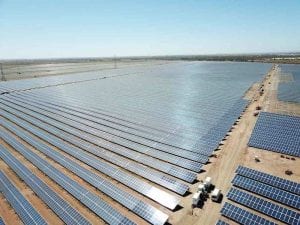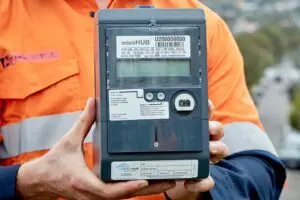The Australian Energy Market Commission says it will get to work applying an emissions reduction objective to its rule-making and review processes, setting in motion what has been described as the most important reform to the Australian energy market in decades.
The AEMC said on Friday that with the Emissions Reduction Objectives Bill 2023 now passed through the South Australian parliament and assent gazetted, it can consider environment alongside the existing criteria for price, quality, safety, reliability, and security.
The announcement ushers in the first substantial change to the objectives of the National Energy Laws in 15 years and is expected to result in a rethink of key rules and regulations that will, in turn, help fast-track the shift from coal and gas to a renewables-based grid.
Perhaps most importantly, it promises to grease the wheels of Australia’s huge Rewiring the Nation task, by making it much easier to usher through investment in the pipeline of major grid upgrades urgently needed to support the shift to renewables and storage.
“This change presents a significant opportunity for us to formally consider emissions reduction in our work, helping to manage the transformation towards a net zero future, as we continue to protect the long-term interests of consumers,” said AEMC chair Anna Collyer.
“We consulted extensively on our guide, as our stakeholders’ insights and perspectives are invaluable in shaping our processes, and we are proud to release it today, to be transparent about how we will achieve this welcomed change.”
“We know firmed renewables are the cheapest, cleanest form of energy and the transformation to more renewables will be supported by making emissions reductions an objective of the national energy laws – a move supported by all state and territory energy ministers,” said a spokesperson for federal energy minister Chris Bowen on Friday.
“This change will ensure that regulatory processes concerning the energy market are fit for purpose to deliver the energy transformation.”
A long time in the wilderness
The move to put the environment back in energy market decision making and redesign comes at a crucial time for Australia and the world, as an increasing number of experts warn we are almost out of time to avert global climate disaster.
At this week’s climate ambition summit, United Nations secretary general António Guterres warned the world is “decades behind” in the transition to clean energy.
In Australia, a Climate Council report released this week says Australia – with its abundant renewables resources – must set a new target to cut emissions by 75 per cent below 2005 levels by 2030, and achieve net zero emissions above pre-industrial levels by 2035.
As RenewEconomy has reported, the lack of an environmental objective has hamstrung regulatory decisions, investments and rule making since it was dropped from the rules of the newly created market in the late 1990s by then Prime Minister John Howard.
Its absence has resulted in some clearly absurd decisions, such as backing new diesel generators rather than a storage option at Broken Hill. For these reasons, Australia’s powerful fossil fuel lobby has railed against the proposed change to the rules.
Other investments, particularly in transmission, have also been dumped or delayed for similar reasons, and because arguments that the investments would lead to lower emissions could not be considered.
And transmission – where so much of Australia’s success in renewables currently hinges – is expected to be a key beneficiary of change to national energy laws.
Big win for transmission
“I think the primary effect of this will actually be in terms of supporting transmission investments,” says Christiaan Zuur, who worked at the AEMC before his current role as director of market, grid and investment at the Clean Energy Council.
“It’s all about network planning. …It will just make it easier to pass RIT-Ts (regulatory investment tests for transmission) and get transmission augmentations built,” Zuur told RenewEconomy on Friday.
“And that’s, of course, good for renewables because renewables and transmission and storage all go hand in hand.”
More braadly, Zuur says the reintroduction of emissions and the environment into the NEO is important progress for Australia’s rapidly changing grid that has been a long time coming.
“We’ve been pushing for inclusion or explicit consideration of emissions in the NEO for years and years,” he said.
“For quite some time now we’ve had to try to account for the reality of carbon costs through… kind of almost backdoor measures. It’s great to finally be able to just account for them upfront and get on with it, frankly.”
Where to from here
The AEMC says it has begun consulting on the two rule change requests it received from Australia’s energy ministers to “harmonise” or align the electricity and gas rules with the emissions objective.
“These steps are required to allow emissions to be transparently considered in network and pipeline expenditure and planning and investment rules,” the commission says.
The AEMC has also released a guide on how it will apply this new objective in its rule-making process, and when making recommendations in reviews. A targets statement sets out a list of jurisdictional targets to be considered by the three market bodies (AEMC, AER and AEMO) when applying the national energy objectives.
Moving forward, Zuur says that the next big reform for energy market bodies and regulators will be determining a “value” of emissions reduction.
“That’s actually the next big thing that we need to understand as an industry … and I understand that that’s being worked on right now,” he told RenewEconomy.










